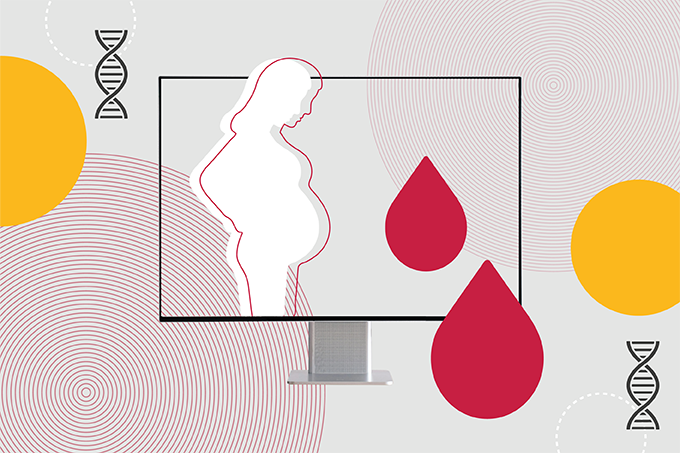
iSTAR of the show
Researchers at the University of Pennsylvania have developed a novel imaging technique – named iStar – that uses spatial transcriptomics data and high resolution histology to provide detailed analysis of individual cells and forecast spatial gene expression. iStar could not only help physicians detect more obscure cancer cells, but also help determine if safe margins are achieved following surgery (1).
More research needed…
Long COVID-19 continues to be misunderstood and under-reported in the media; now, a recent article published by Nature has highlighted how the dearth of research into long COVID-19 has affected low- to middle-income countries (2). The paper emphasized the importance of including study participants with diverse genetic backgrounds so that researchers can see what cellular pathways are involved and how they might vary from person to person.
Screening sensation
A group of Danish researchers have designed a new genetic screening test, desNIPT, that requires a simple blood sample from expectant mothers to make a comprehensive analysis of the fetus’ genes (3). Samples were taken from 36 pregnant women, and the method successfully identified 11 pathogenic gene variants in the unborn babies.
X-ceptional Diagnosis? Part 1
A PCR test is the gold-standard method to diagnose COVID-19; however, there are limitations, such as high cost and lengthy turnaround times. To offer a potential alternative, researchers have developed a deep learning-based method called custom-CNN to diagnose COVID-19 infection in chest X-rays (4). The AI-model proved to have a 98 percent accuracy rate.
X-ceptional Diagnosis? Part 2
Hepatocellular carcinoma (HCC) often goes undetected until the advanced stages – but early detection and therapy initiation go hand in hand with improved patient outcomes. A recent paper reviewed the potential of deep learning and neural network models in the radiological detection of HCC. The advantages, such as reducing diagnostic variability, optimizing data analysis, and reallocating healthcare resources, would overcome the limitations of human interpretation, the review concluded (5).
References
- D Zhang et al., Nat Biotechnol (2024) [Online ahead of print]. PMID: 38168986
- H Ledford, Nature, 625, 20 (2024). PMID: 38172361
- I Miceikaitė et al., N Engl J Med, 389 (2023). PMID: 37991863
- A M Hussein et al., Sci Rep, 14 (2024). PMID: 38177156
- B Koh et al., eGastroenterology, 1 (2023).




